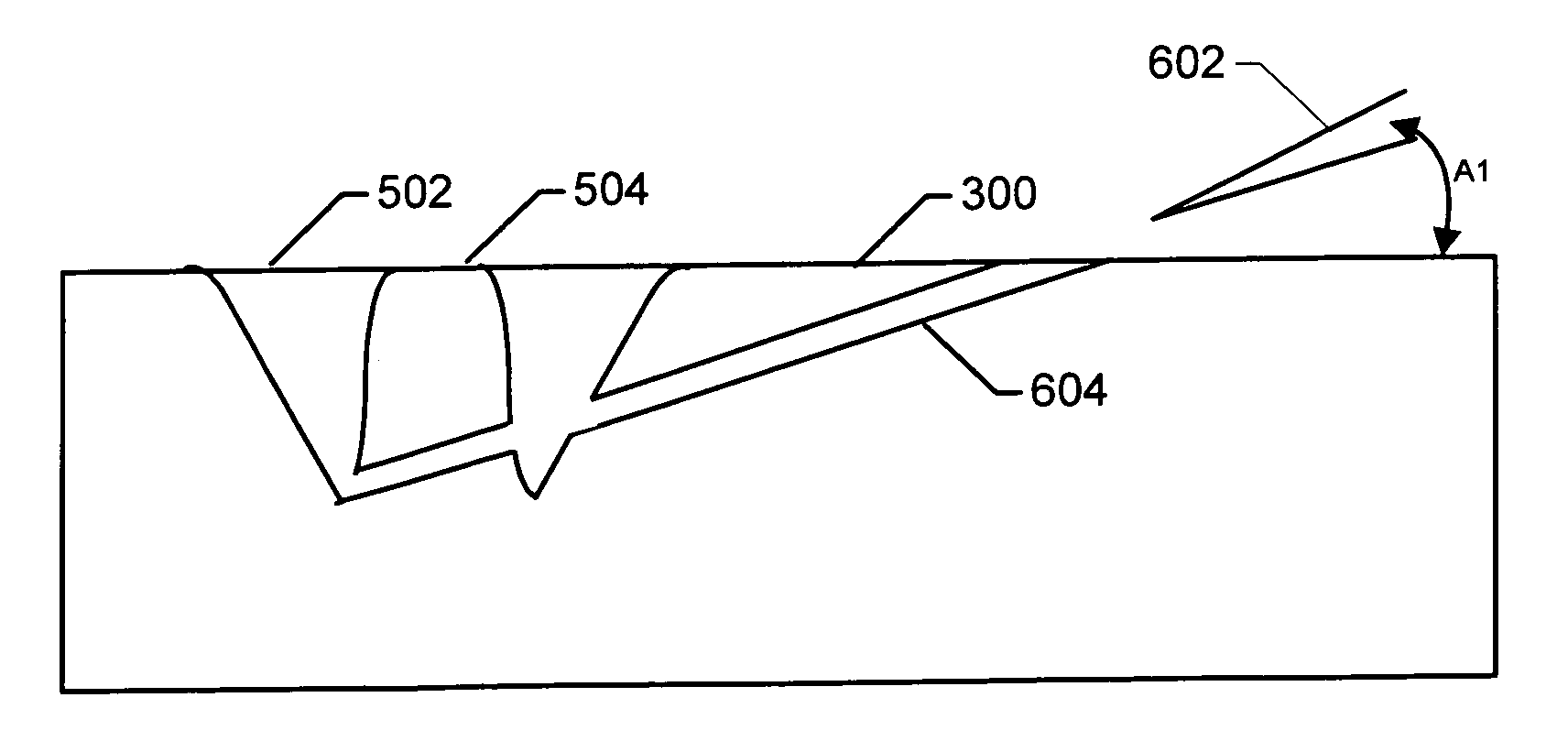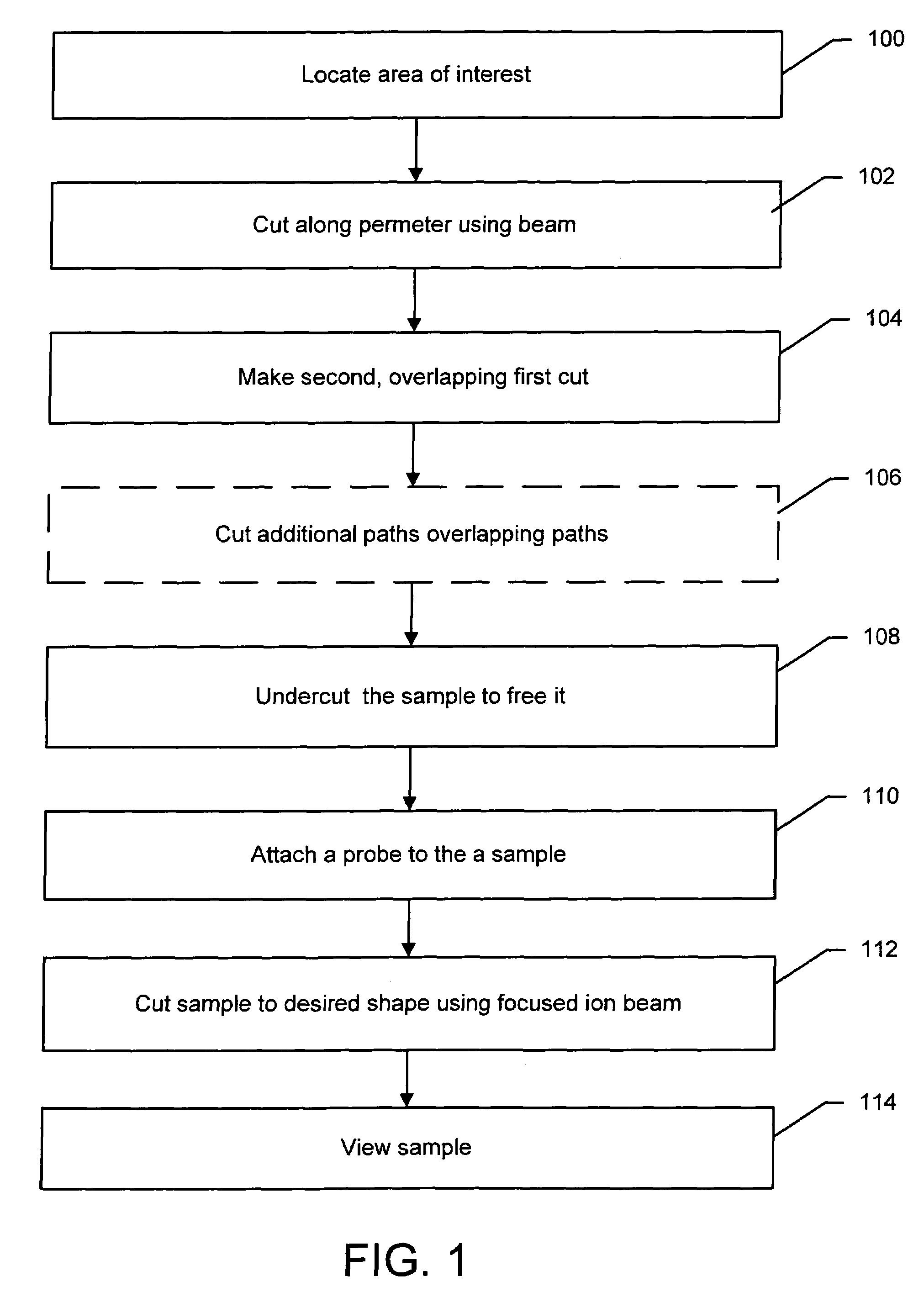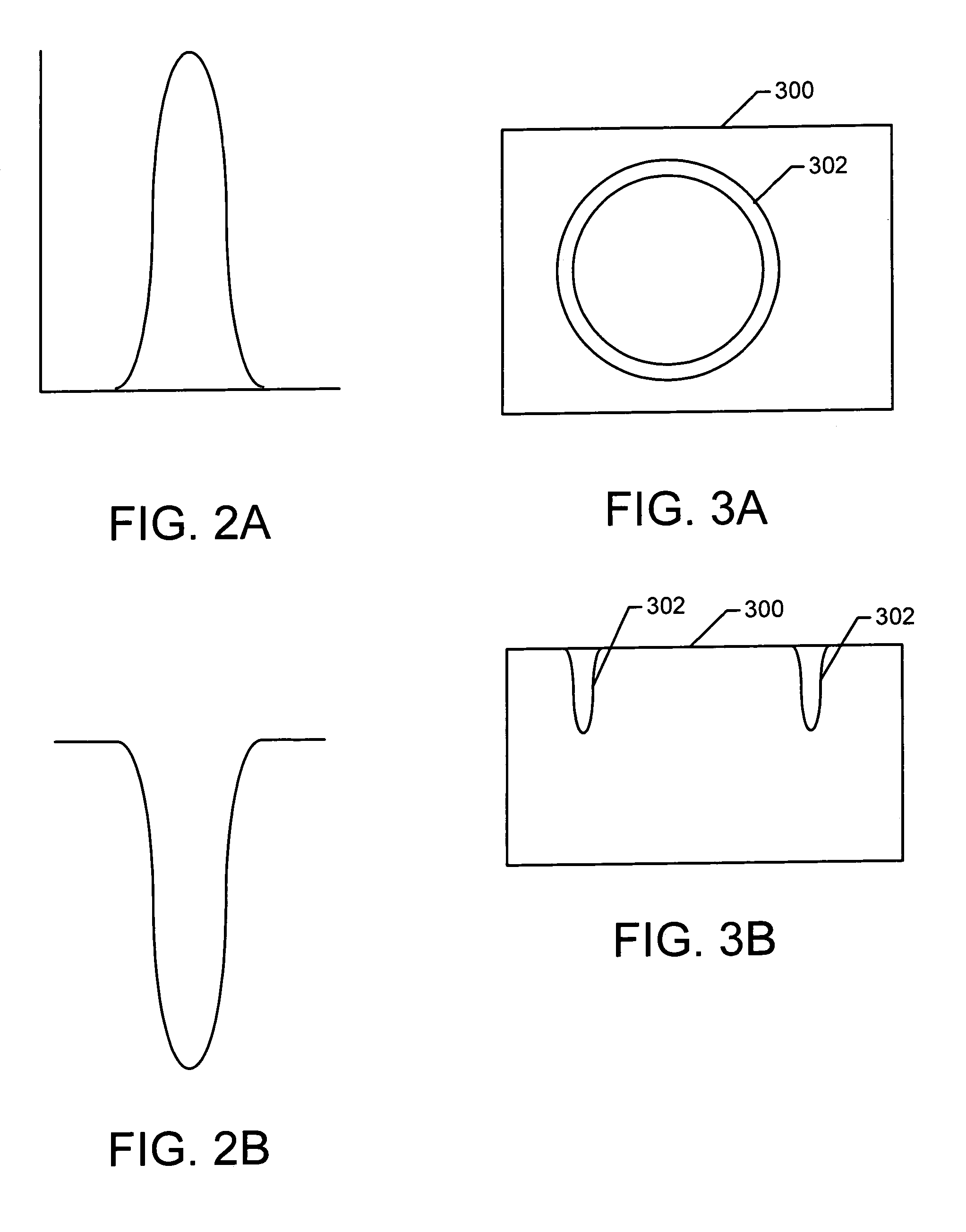Repetitive circumferential milling for sample preparation
a sample preparation and circumferential milling technology, applied in magnetic recording, record information storage, particle separator tubes, etc., can solve the problems of time-consuming and time-consuming all of these methods
- Summary
- Abstract
- Description
- Claims
- Application Information
AI Technical Summary
Benefits of technology
Problems solved by technology
Method used
Image
Examples
Embodiment Construction
[0023]Preferred embodiments of the present invention are directed to methods and an apparatus for efficiently extracting microscopic samples from substrates. In a preferred embodiment of the present invention, a sample is extracted by making multiple, overlapping cuts using a beam, such as a focused ion beam, to create a trench around a sample, and then undercutting the sample to free it.
[0024]As discussed in greater detail below, up to a point, the sputter yield increases as beam incidence angle increases (although yield drops sharply as the incidence angle approaches 90°). The present invention takes advantage of the relationship between incidence angle and milling rate by employing a milling algorithm that maximizes beam incidence angles during milling. The milling beam is used to make a series of overlapping circumferential cuts around the object of interest. For each successive cut, the beam position overlaps a previous edge position extending from the outer diameter to an inne...
PUM
| Property | Measurement | Unit |
|---|---|---|
| angle | aaaaa | aaaaa |
| thick | aaaaa | aaaaa |
| thick | aaaaa | aaaaa |
Abstract
Description
Claims
Application Information
 Login to View More
Login to View More - R&D
- Intellectual Property
- Life Sciences
- Materials
- Tech Scout
- Unparalleled Data Quality
- Higher Quality Content
- 60% Fewer Hallucinations
Browse by: Latest US Patents, China's latest patents, Technical Efficacy Thesaurus, Application Domain, Technology Topic, Popular Technical Reports.
© 2025 PatSnap. All rights reserved.Legal|Privacy policy|Modern Slavery Act Transparency Statement|Sitemap|About US| Contact US: help@patsnap.com



